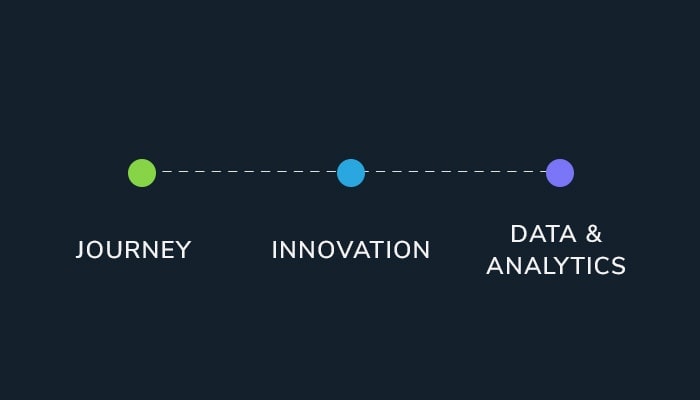Retail 2020: Forging Customer Connections through Data

2019 has been a year of tremendous challenges as well as opportunities for the retail industry. On one hand, there are still questions about the future of physical stores. Barneys and Lord & Taylor—both venerable New York institutions—closed some of their highest profile locations, including flagship stores.
On the other hand, we are in the midst of an incredibly dynamic period of growth in multi-channel shopping, as traditional stores focus on digital presence, and young, direct-to-consumer (DTC) brands invest in physical retail stores.
Clearly, retail consumers in 2020 are looking for what once seemed like an impossible combination in their shopping experience—both convenience and connection.
- The demand for convenience. In 2020, consumers don’t just expect to shop when they want and for what they want. They also want to pay how they want, and Klarna, AfterPay and others are addressing millennials’ needs for flexibility and control by offering ways to pay with no-interest installments.
- The demand for connection. Convenience and savings are not the only draw for consumers. Customer service and personalized interactions are also driving purchasing decisions and brand loyalty. In fact, consumers are willing to spend up to 16% more on products and services with companies that offer a better experience, according to a 2018 PwC study.
So, how do you reconcile these two seemingly opposed customer demands? Here are three strategies that will become increasingly critical to retail success in 2020 and beyond.
1. Think in Connected Journeys
“It’s a fine needle to thread between being too inaccurate and too creepy… At the end of the day, consumers don’t just want you to show them that you know them, they want you to help them get something done.”
– Gartner
In creating connected journeys, concentrate on the following critical first steps.
-
Get the welcome message right. Be relevant from your very first interaction. To do so, you must differentiate between someone who shared their email address but never purchased, shared their email as a result of their first purchase, or has been a customer for a while and just decided to share their email.
-
Tailor follow-up messages to match customer behaviors. Welcome messaging is critical, but make sure you understand the patterns in subsequent behaviors (e.g. online browsing only, or browsing and making a purchase) and can respond appropriately.
-
Get the all-important post-purchase message right. Be sure you understand the customer’s behaviors that follow her purchase event, and respond to them appropriately, for example:
-
Take into account the return window before asking for feedback
-
Consider a tailored recommendation series in case they return the purchase
-
-
Respond to behavioral patterns over time. For the “average” customer, no purchase within a three-month period might not sound that bad. But for one particular customer, it could be a strong signal of disengagement and eventual churn. Consider creating proactive personalized communications to re-engage her.
2. Build Innovation into Your Company DNA.
“54% of marketers staff their inhouse teams with talent whose sole job is to innovate… 58% of marketers name martech vendors as highly valued innovation partners.”
– Gartner.
Most marketing organizations still must choose between convenience or connection. It takes a strong, ongoing commitment to innovation to deliver both in a sustainable way.
-
Innovate with KPIs. Discover and measure valuable consumer behaviors that aren’t part of your standard metrics. For example, retailers know that each return event is also an opportunity to connect and, potentially, generate a new sale. A “Return-to-Exchange” ratio can create an organizational incentive with a ripple effect on revenue-per-customer.
-
Innovate with data collection. It is much harder to gather “browsing” behavior in physical retail, but there are innovative ways to bridge that gap & fuel your company’s retail data analytics. For example, customers rarely buy all of the products suggested at an in-store styling appointment. Why not create an app allowing stylists to input information about the products used in the session and share it with other channels?
-
Innovate with channel strategies. Forget the word “cannibalization.” Focus instead on promoting multi-channel behavior—for example by harnessing AI to target the right audiences for your multi-channel strategies. After all, the average annual revenue per multichannel customer is 2x that of other repeat buyers, and the difference in margin is even larger.
-
Innovate with organizational strategies. Don’t get stuck in the past with siloed, channel-specific, or product-specific teams—or organizational barriers between business and technology. Also consider incorporating agile practices and integrating a customer data platform into your business to enable teams to react quickly to the market and ever-changing customer needs.
3. Invest in Data and Analytics Capabilities.
“The world’s 10 largest traditional retailers are spending a much smaller proportion of their revenues on IT than Amazon, which views digital tools, data analytics and other technology as core to its mission to get ever closer to customers.”
– Bain & Co.
Data and analytics are at the core of delivering connected journeys. To do so consistently and at scale, you need all of the following capabilities:
-
Data unification. This requires bringing together all key online and offline customer behavioral data, and then associating all of it with individual customer profiles. Where possible, focus on recognition of customers as individuals, not in email addresses or cookies.
-
Interactive data access for business users. Business users need access to data in a direct and flexible way, if you want to truly empower them with data-driven insights as they formulate strategies and plan execution.
-
AI/ML capabilities. Invest in AI/ML to make your insights more predictive and powerful and, ultimately, more impactful for your customers and your business alike, whether you build internal capabilities or partner with outside vendors.
-
Seamless execution across all touch points. Invest in seamless execution of your strategies across all customer touch points—including the ability to act in a timely manner on your data-driven insights and truly optimize customer experiences. In this way, you will demonstrate to consumers that you really get them and engender loyalty over the long term.
If you’ve made it this far, you’re probably thinking these recommendations sound great in theory, but are impossible to put into practice. The reality is, retailers just like you have made the leap, with the help of ActionIQ, and are already seeing results. Check out the results that Vera Bradley achieved once they got ActionIQ’s CDP up and running.





